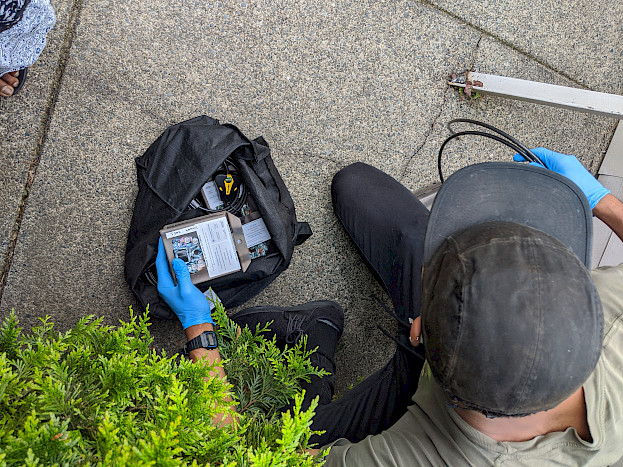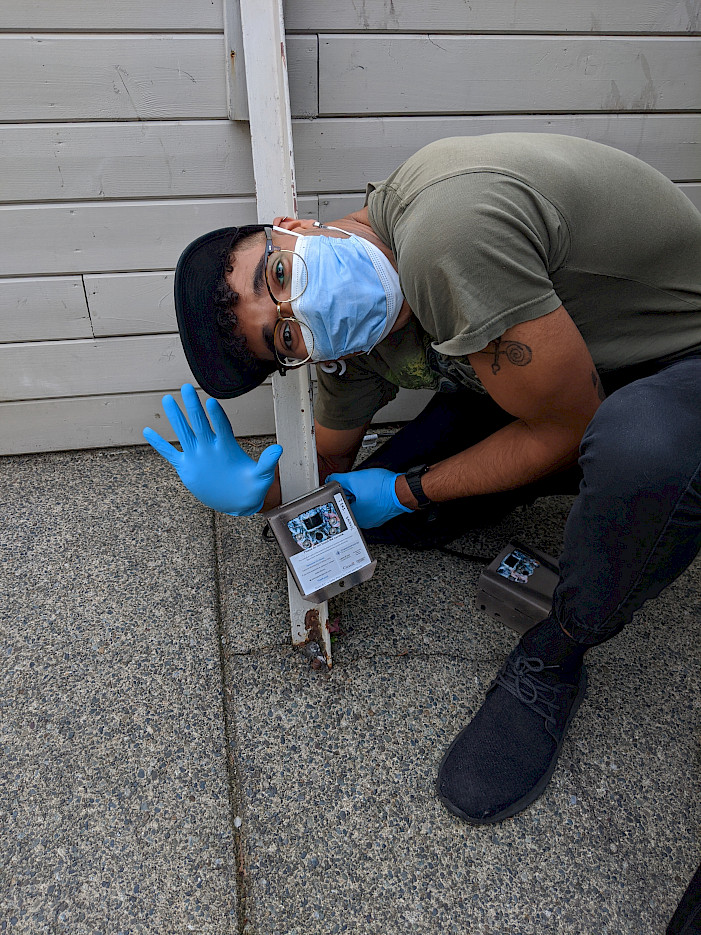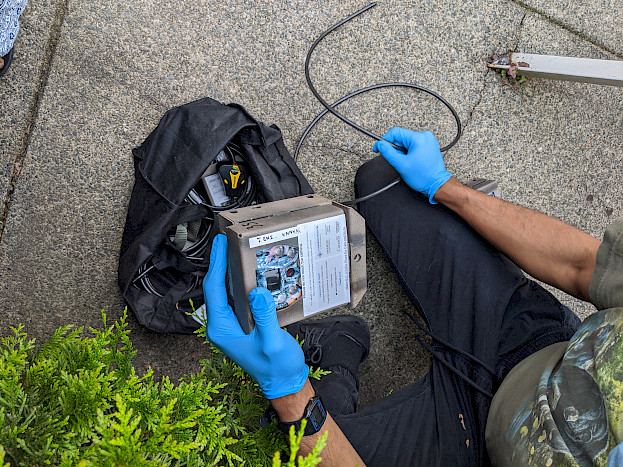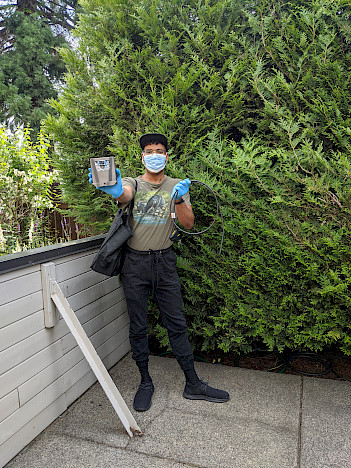When you think of your typical pet cat the first images that come to mind may be those of a cute and harmless fur baby or perhaps a curious kitty with inquisitive eyes. While, for many people, pet cats are trusted and cute companions however, the same opinion isn’t held by local songbird populations. This is because our pet cats present a variety of threats to urban wildlife populations when allowed outside unsupervised. While outside, our pet cats increase predation pressure for native birds and wildlife, contribute to urban disease transmission, and will often be the subject of unwanted pregnancies or conflict. Additionally, unsupervised pet cats may pose higher risks to the humans they live with because of zoonotic diseases easily transferred from pet to person. Rabies and toxoplasmosis are examples of serious diseases and intestinal parasites which can be transferred from cats to humans. To understand more about domestic cat behaviour, densities and distribution within Vancouver we have been using these past two weeks to secure our final camera trap locations.
This process is something I have found to be both sporadic and unpredictable. While trying to secure the necessary distribution of camera trap sites across Vancouver I have been in constant communication with realtors, renters, business owners, shipping companies, city councillors and even the occasional ENGO. The process for securing camera trap locations within Vancouver has been predominantly determined by individual privacy concerns. Many urban residents and businesses are concerned about their own privacy and the future use of captured images. These concerns are a natural response to hearing some stranger ask to put a camera up in their backyard. However, because of these concerns, site acquisition has been a slow process. The pace of this process has allowed me to recognize the trends in individual privacy concerns. For the residents of Vancouver, I have identified 4 major concerns with putting up camera traps for wildlife monitoring.
- Concern for individual identifiable features
- Concern for identifiable images of children
- Concern for management and storage of data
- Concern for type of data being recorded (video vs photo)
I have found these four concerns to be at the core of the resistance I have faced while trying to secure camera trap sites. Others hoping to conduct similar wildlife camera trap studies in Vancouver should note that residents are far more accepting of photos than of video footage. Additionally, when considering camera installation, be sure to keep the camera as low to the ground as possible. The lower the camera is to the ground, the more support for the installation. By addressing these concerns immediately, I have found more individuals have been willing to support the study. While we have yet to install our first camera, we have been able to perform some mock instalments (photos below) for residents who wanted a better understanding of the installation process.
 |
 |
 |
These mock installations have proven a useful tool for securing consent from business owners and homeowners specifically. With nearly all our sites secured we are hoping to start the first wave of installations this Monday, June 22nd. Hopefully, our next update will showcase the first of our camera trap images. Until then, wish us luck!
About the Authors
Jaylen Bastos - SCBC; University of British Columbia; City of Vancouver
Jaylen Bastos is a Quuer Black and Latinx scientist whose work centers around urban conservation, animal behavior and human-wildlife coexistence. He Is a graduate of the University of British Columbia's Natural Resource Conservation Undergraduate program with a specialization in science and management. Currently, Jaylen is serving as one of the principal investigators for SCBC's Vancouver Cat Count camera trap project. In addition to the Vancouver Cat Count, Jaylen is currently working towards his Masters, and will be using his Vancouver camera trap network to answer questions about urban animal behavior, cognition and coexistence strategies.
Elizabeth Gow - Stewardship Centre for British Columbia; Nature Canada; Birds Canada
Elizabeth Gow is a Liber Ero Postdoctoral Fellow in the Department of Integrative Biology at the University of Guelph, where she studies the impacts of domestic cats on birds and other wildlife. Elizabeth uses trail camera surveys to find out where domestic cats are found and to count cats in British Columbia, Ontario, and Quebec.